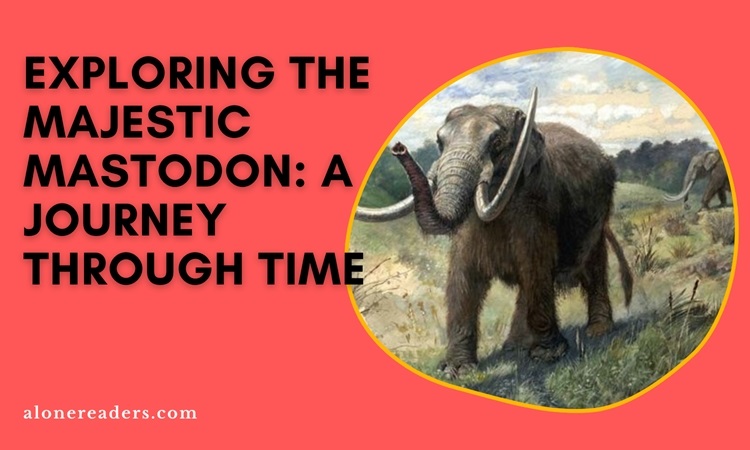
Once upon a time, in the vast wilderness of ancient North America, roamed a majestic creature known as the Mastodon. This impressive beast, an ancestor of today's elephants, was a significant part of the Pleistocene epoch's ecosystem, existing roughly between 10,000 to 11,000 years ago. The story of the Mastodon is not just a tale of a single species, but a window into a bygone era of Earth's history, offering insights into the evolution, environment, and eventual extinction of these magnificent animals.
The Mastodon, scientifically referred to as Mammut americanum, was distinct in appearance and size. Its most striking features were its long, curved tusks and a prominent trunk, similar to those of modern elephants. These tusks, often reaching several feet in length, were not just for show. They played a crucial role in the Mastodon's survival, used for foraging, fighting, and interacting with its environment and other Mastodons. The trunk, a versatile and powerful tool, was likely used for similar purposes as seen in today's elephants, such as feeding, sensing, and communication.
The physical stature of the Mastodon was equally impressive. They were large, robust animals, standing up to 10 feet tall at the shoulder. Their bodies were covered in a coat of hair, an adaptation to the colder climates of the Pleistocene epoch. This hair provided insulation against the harsh weather conditions, enabling them to thrive in environments that would be challenging for less adapted species.
The habitat of the Mastodon was predominantly the forests of North America. These forests provided not only shelter but also a rich source of food. The Mastodon was a herbivore, feeding mainly on trees, shrubs, and other vegetation. Its diet was different from that of its contemporary, the Woolly Mammoth, which grazed on grasses and herbs. This difference in diet is evident from the structure of their teeth; Mastodons had cone-shaped cusps on their molars, ideal for breaking down woody vegetation.
The social structure of Mastodons is a topic of ongoing research and debate among paleontologists. While there is evidence to suggest that they may have lived in small family groups, much like modern elephants, conclusive evidence is still lacking. However, what is known is that these creatures were an integral part of their ecosystems, interacting with other species, both flora, and fauna, in complex ways.
The extinction of the Mastodon is a subject of both fascination and sorrow. It is widely believed that a combination of climatic changes and human hunting contributed to their demise. As the Pleistocene epoch gave way to the Holocene, the Earth's climate warmed, leading to changes in habitat and food sources. At the same time, human populations were expanding, and with them, hunting practices that put pressure on large mammals like the Mastodon.
The discovery and study of Mastodon remains have been crucial in piecing together their history. Fossils, including bones and tusks, have been found across North America, from Michigan to New York. These remains have provided valuable insights into their physical characteristics, habitat, and even their interactions with early humans. For instance, marks on Mastodon bones and tusks have been interpreted as evidence of human hunting or scavenging.
The Mastodon holds a special place in the history of paleontology and natural history. Its discovery in the early 18th century was among the first pieces of evidence suggesting that species could go extinct - a concept that was not widely accepted at the time. Since then, the Mastodon has become a symbol of the dynamic and ever-changing nature of life on Earth.
In conclusion, the Mastodon was not just another creature in the annals of history. It was a magnificent animal that played a significant role in its ecosystem. Its existence and extinction tell a story of evolution, adaptation, and the ever-changing Earth. The Mastodon's legacy lives on, not only in the fossils that continue to be studied but in the imagination of all who are fascinated by the wonders of the natural world.